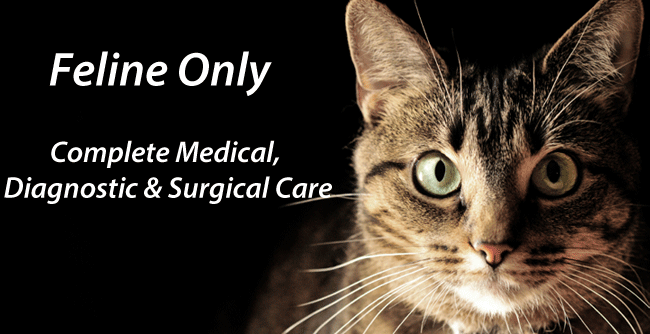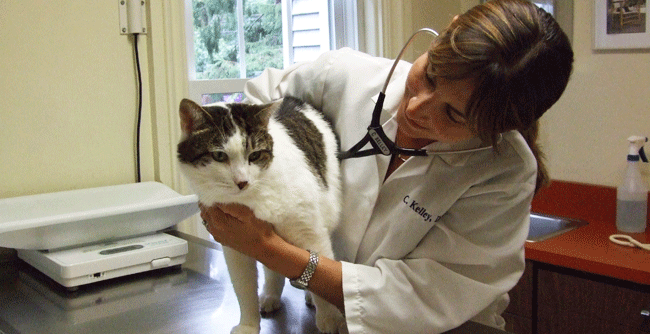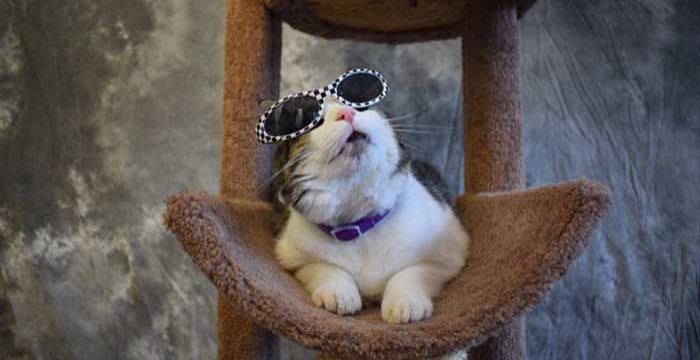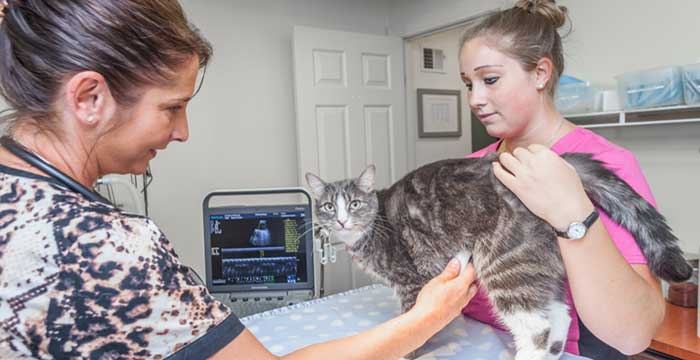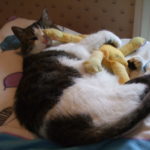
Natural Cat Behavior
Have you been there? You are walking down the hallway with shorts on and your cat suddenly without warning or provocation jumps out from a doorway launching themselves at your bare legs with claws and sometimes even teeth! As a veterinarian, I often get these stories at the veterinary hospital and recommend training.
Think about a cat’s idea of fun. It usually involves stalking, chasing, attacking and killing things. From a very young age kittens begin to learn this hunting behavior by practicing on their litter mates. The game begins when one kitten jumps and bites their sibling. Let the games begin! When the game becomes too rough the sibling responds with body position, vocalization or hissing, or finally a well-placed claw until they are taught what is acceptable among the litter. However this cat behavior is also training to protect territory from predators including other cats.
Cat Instincts
Furthermore, other games include hunting training. Momma cat usually brings home some fresh carcasses with which the kittens can play. Gradually as the litter gains more expertise, mom will start to bring mortally wounded prey as a play item. Then gradually less wounded prey will be introduced until the kittens hunting prowess progresses to being able to capture and kill fully living prey. My point is that cats are true carnivores and there idea of play does not included coloring.
Training Your Cat
So once these hunting, clawing but cute as can be felines start living with us, how can we make play more tolerable to the human household? The absolute first rule of thumb is to never reward biting, clawing, and scratching of humans no matter how big or small that human may be. Even if there is one person in the house is willing to put up with this play, the rest of the household will continue to be targets. This is the training phase of both the humans and the cat of what is not acceptable. Animal hospitals around the country get many requests to euthanize “aggressive” cats because they scare the grandchildren, the neighbors or even the husband just because they are play aggressive and have never been trained.
What does this mean? NO playing with hands, feet, toes or hair as toys. Not under a blanket or under a box, with socks on, hand tucked into a sleeve…..never. There are plenty of toys out there for cats, some we can even make at home. We will talk about that later. And if or when, a cat attempts to use these items as toys, they must be distracted with an appropriate toy. A food reward can be used if the cat plays with the appropriate toy. Remember unless there is an underlying cat behavior issue, this is for fun! You know what else is fun? When the human playmate screams, squeals, runs, sprays the cat with a squirt bottle, wags a finger sternly yelling “NO!” and all of these things will reward this initiation of play. If the cat cannot be distracted, I recommend that they be gently, calmly and safely be placed into a quiet place for a minute or two, because that is no fun. Then continue to choose appropriate toys to continue the play and training.
Cat Play
Here’s the fun part! Playing with your cat should be fun! Of course, cats are inclined to play with a stuffed mouse, ball, pillow, empty bag or box etc. however cats adore social interaction from you! Finding interactive toys that they enjoy bring you into the action in a safe way. Laser pointers, mice on the end of a cat safe string, feathers on the end of a stick are great choices that allow you to play at an arm’s length from hunting teeth and claws. Just remember to put all strings out of reach of cats when they are not supervised. Another option is tossing treats or dental diets down the hall or through the kitchen can provide entertainment as well. Different cat personalities will have different preferences. Some cats are bug hunters so a laser pointer is purrfect. Others prefer to hunt mice or birds so mice on a string or feathers on a stick are more appropriate. And make those things move up onto perches, across the bed and around the dining room table. Don’t forget about vertical spaces! Remember that the idea is that sometimes they catch their prey and that is part of the reward. It may take some time to get to know what your cat likes but once you find out… just give it to them!
The key to success in training any cat behavior is commitment, patience, and consistency. And as always your favorite cat veterinarian should always be a source of information if issues arise or especially if you think that there is a cat behavior issue.
For more information check out Cat Clinic Blog
